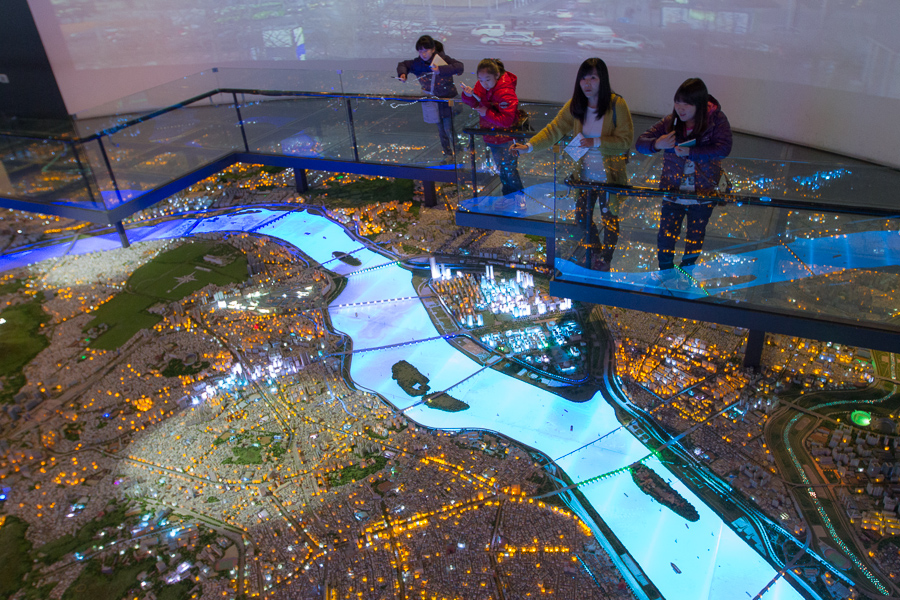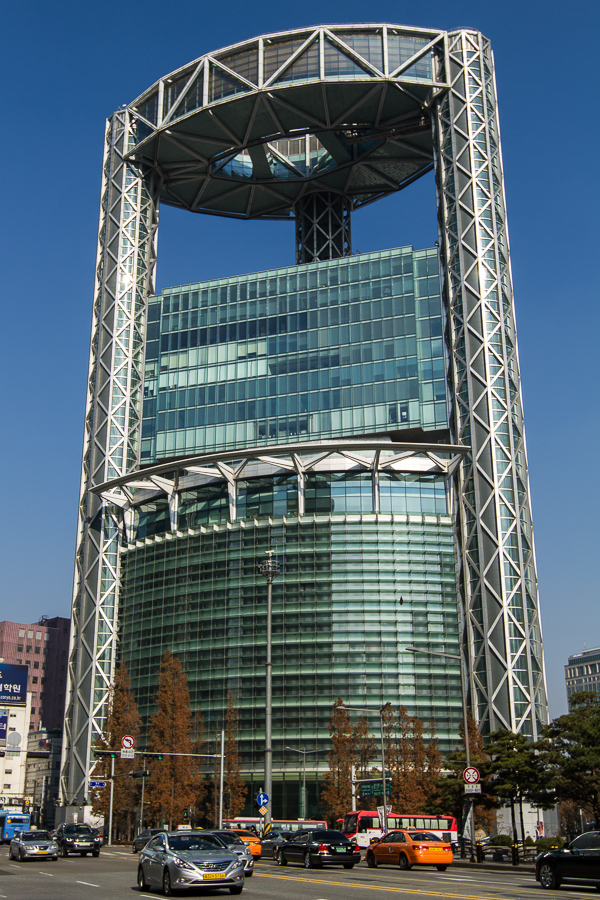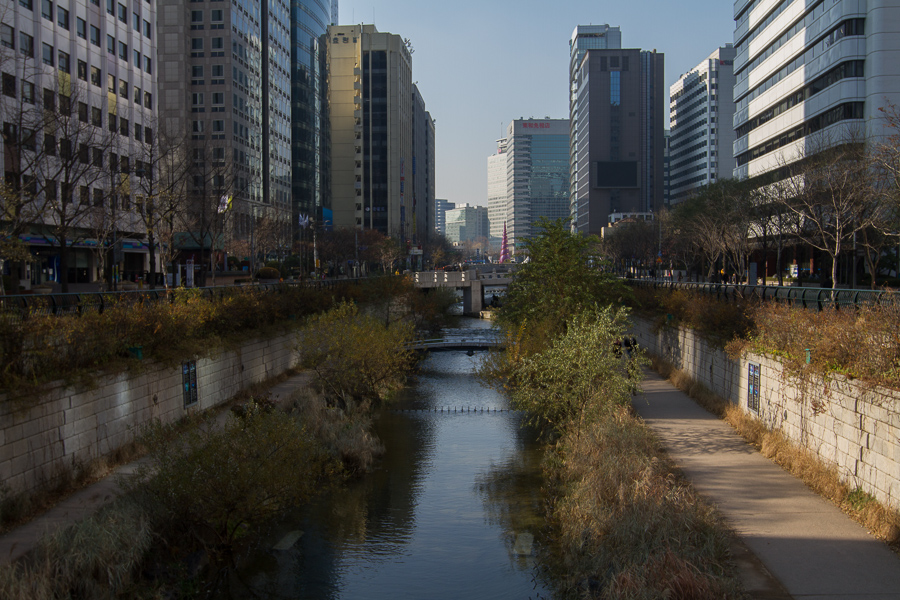(I promise, no more "Seoul" puns. Promise. Really. Swear.)
Yesterday I started my shpatziring at the Seoul Museum of History. Now, if you know about my love maps, you can imagine what happened when I walked into this room:

That is a 1:1500 scale model of the city. Every. Freaking. Building. With an electronic system that put a spotlight and a little CCTV camera on whatever point of interest you wanted to see.
(Aside: Would it have killed them to do the electronic interface in multiple languages? Sheesh. Every other public interface I've seen has English, Japanese, and Chinese translations. But not the super high-tech electronic touch-screen that controlled the lights on this model.)
After spending about half an hour poring over the model, I went through the rest of the museum's main collection. (Fortunately most of the descriptions were in English, and it turns out I could have picked up a translation earpiece that works off bar codes next to the exhibits.) I believe I now understand one of the chief reasons I haven't really connected to Seoul.
Throughout the museum, I got two big themes: first, until the 1970s, southern Korea was poorer than northern Korea. Second, Koreans hate their own history. I'll have more on the second part later today or tomorrow, other than to say it informs their architecture and urban planning hugely.
Sherman, set the Wayback Machine to 15th August 1948. Had Korea reunified three years after V-J Day as the Allies originally planned, sparing the North the some of the worst economic and social mismanagement the world has ever seen, it's possible Seoul would be a sleepy capital city like Ottawa, with Pyongyang as the principal economic hub. Instead, North Korea invaded the South in 1950, and after this bloody civil war, millions of people poured into the city from all over the peninsula. Seoul went from 1.5 million people in 1949 to 10 million people in 1990. (Since 1990, its population has hovered around 11 million, which I'll get back to.)
The only major city in the U.S. to grow that fast in that period was Las Vegas, which had just 24,000 people in 1950 and 478,000 in 1990. And you know what? I don't connect with Las Vegas much, either.
See, Seoul had to build enough infrastructure and housing for its 8½ million new residents in just a couple of decades. Unfortunately for Seoul's architecture, those decades included the modernist-brutalist 1960s and 1970s, when evil fascist inhuman controversial figures like Le Corbusier stalked the halls of urban planning commissions. And Seoul had no Jane Jacobs.
You can see, if you look closely at that model, or if you even scope the Google Earth images of the city, what happened next. The history museum documents how the city government razed entire neighborhoods of traditional houses (like these) and replaced them with cheap high-rises. The Gangam district across the river popped up out of a swamp in 10 years' time.
Result: A sprawling city comprising almost entirely brutalist buildings from the 1970s and 1980s, with the occasional 21st-century structure thrown in. In fairness, it's not all bad; the Jonggak Tower, for example, is kind of cool:

Chicago also had a period of rapid growth, followed by massive urban renewal: from 1830 to 1870, Chicago's population grew two orders of magnitude, from 4,500 to 490,000. Then in 1871 most of the city burned to the ground, clearing all the shanties and wooden structures out. When we rebuilt, we did it with a pretty logical plan. And when we expanded six fold in six decades (1870 to 1930), we did so with essentially no geographic barriers in three directions and during a period in architecture when things were unavoidably human-scale. (Don't forget, though: Chicago built the first steel-framed skyscraper in 1884, and also built its share of ghastly, vertical Corbusian slums in the 1950s.)
In sum, Seoul's architecture makes me want to stay in my hotel room.* The city feels, it pains me to say, a little soulless.
There's a little glimmer of hope: the city's stability since the 1990s. Thanks to family planning programs and social pressure, the Korean population is more stable than it was before then, and Seoul's infrastructure has had time to catch up with its needs. People still prefer to live in cheap high-rises, but with a couple more decades of stability, the city might start sanding off its brutalist edges.
Look at Chicago again as an example. After a century of wild growth, Chicago's population stabilized around 3 million, declining a little in the 1980s but picking up again since 2000. Instead of building as fast as we can, we've spent about 60 years revising: tear down the crap we hate, preserve the stuff we like. Chicago has a large contingent of people like me, who will spend a lot to live in neighborhoods with hundred-year-old trees flanking hundred-year-old three-flats, and whose ideas about affordable housing don't amount to "round them up and stuff them in."
Seoul isn't there yet. They might never be; it's entirely possible that ten million Koreans really do like Corbusian modernism, and I'm postulating a difference of quality rather than a difference of taste.
There's a lot of great stuff in Seoul. It's a ridiculously easy place to live, it seems, as it's the most convenient and efficient city I've ever seen. (Sorry, Tokyo.) It's just not a place I'd want to live.
- 30 -
* A room, by the way, that overlooks the Seosemon Overpass, a structure similar to the part of Western Avenue that flies over Belmont in Chicago. The history museum specifically called out this 1968 structure as a model for the rest of Seoul. They liked the model so much they built dozens of raised highways right atop other highways, buildings, railroads, and even rivers, and then started removing them in the 1990s when the soul-crushing lack of walking spaces finally got to them. And so little do urban planners here think about history that only 50 years after covering up Cheonggye Stream, they rebuilt it from scratch because they couldn't find it again. Here's Cheonggyecheon today:
